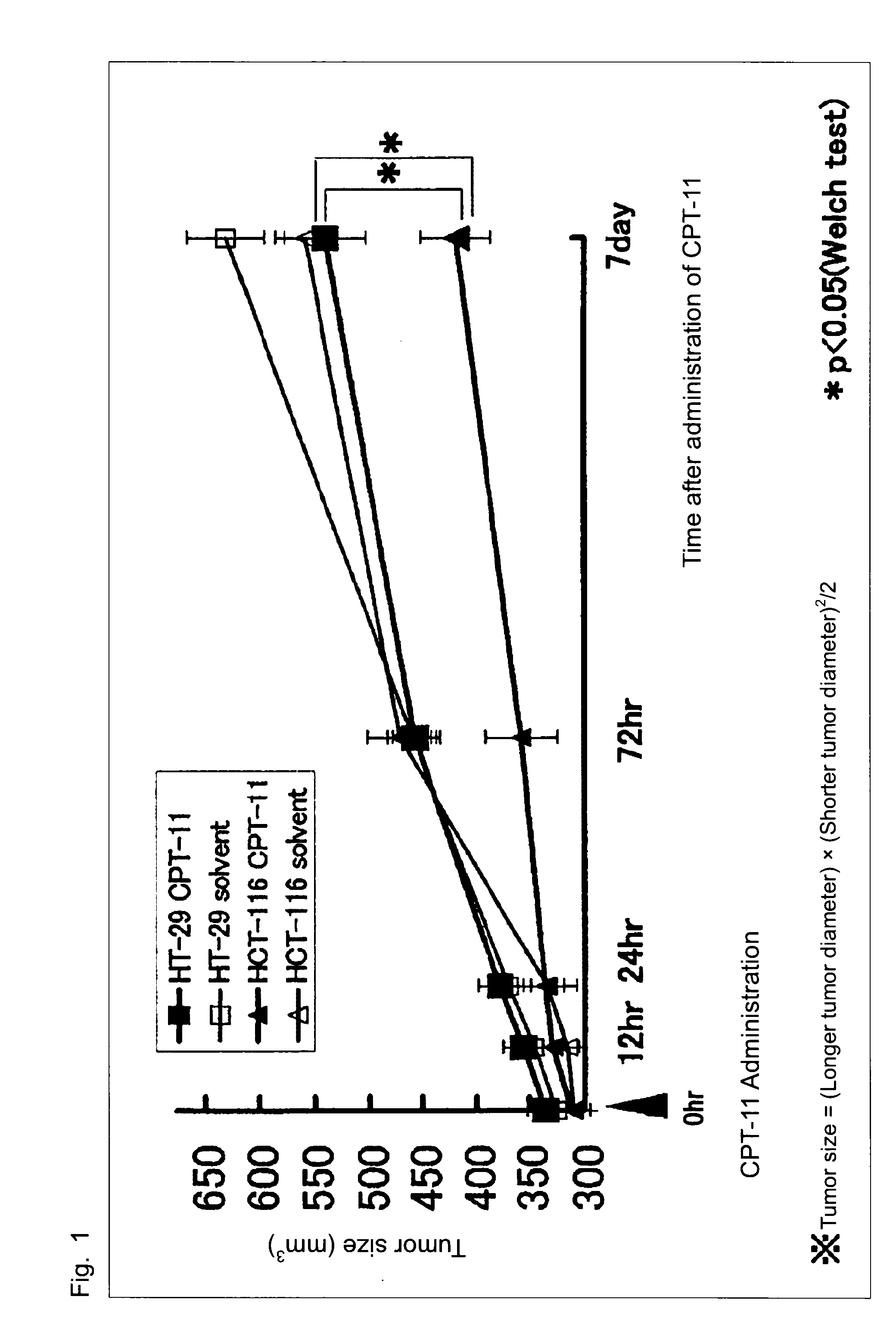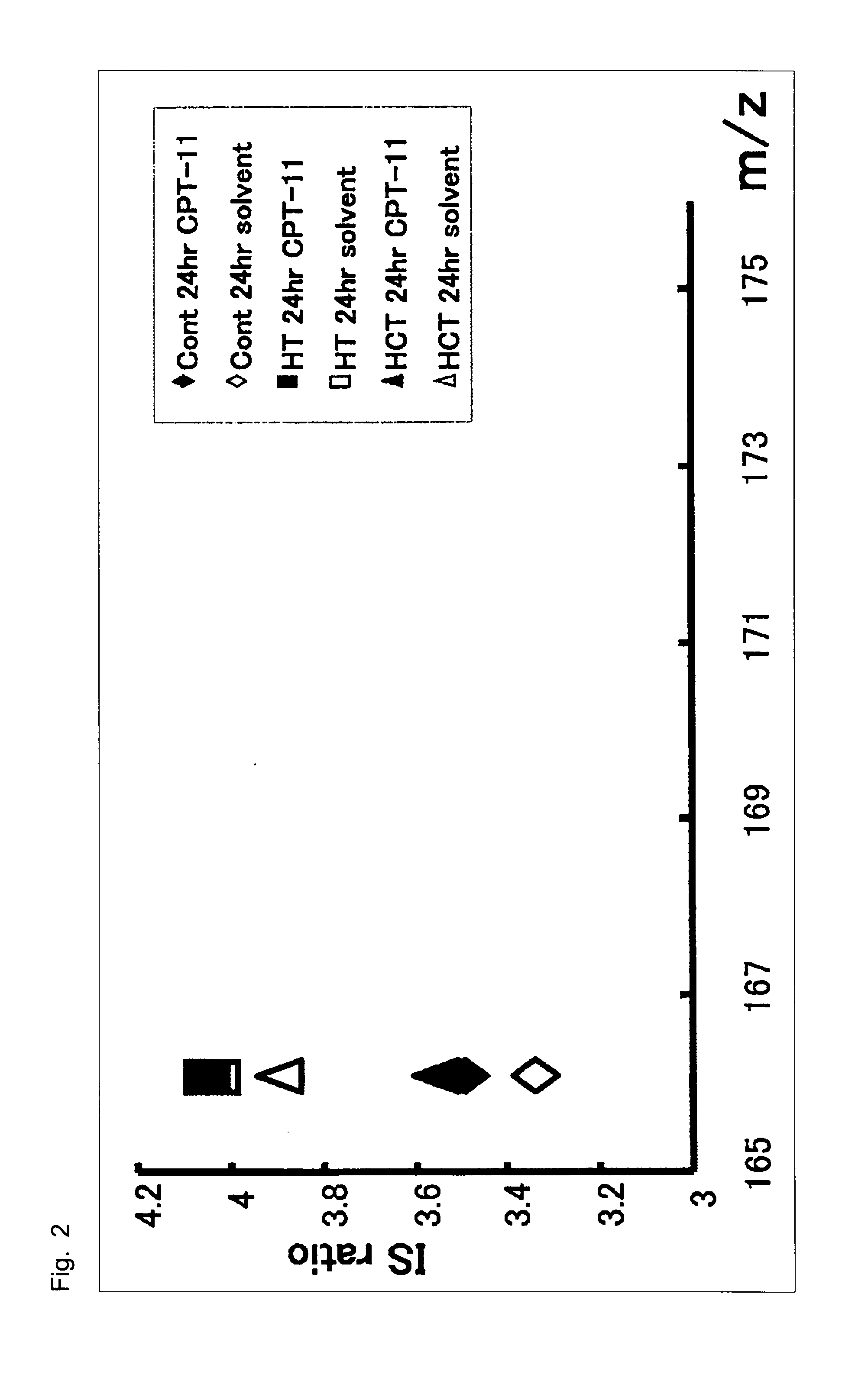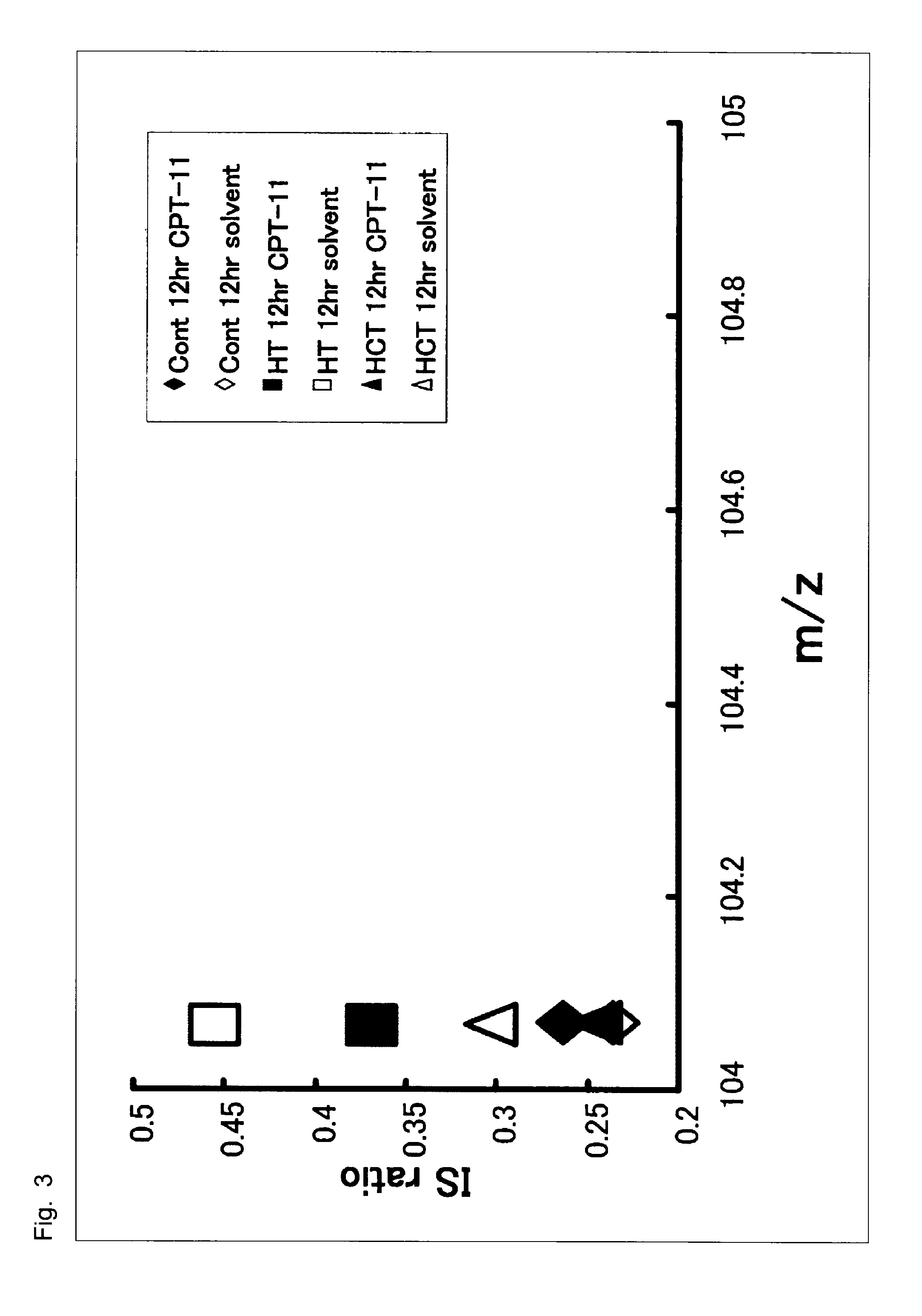Marker for determination of sensitivity to Anti-cancer agent
a technology of anti-cancer agents and sensitivity tests, which is applied in the direction of biocide, drug compositions, instruments, etc., can solve the problems of high health care cost, high patient burden, and interindividual differences, and achieves enhanced adverse events, reduced patient burden, and high therapeutic
- Summary
- Abstract
- Description
- Claims
- Application Information
AI Technical Summary
Benefits of technology
Problems solved by technology
Method used
Image
Examples
example 1
(1) Method
(a) Animal
[0049]Six-week-old, male nude mice (BALB / cAJcl-nu / nu) purchased from CLEA Japan, Inc. were used and allowed to ingest a general feed and drink water freely in a thermostatic chamber. A protocol following the animal experiment guideline in School of Medicine, Keio University was applied and then approved. Then, this examination was carried out humanely.
(b) Cultured Human Colorectal Cancer Cells
[0050]Cultured human colorectal cancer cells, HCT-116, having high sensitivity to SN-38 and cultured human colorectal cancer cells, HT-29, having low sensitivity to SN-38 were obtained from Yakult Honsha, Co., Ltd.
(c) Drug
[0051]Campto™ as a preparation of CPT-11 and a solvent for dissolving Campto (hereinafter, referred to as “solvent”) were obtained from Yakult Honsha, Co., Ltd.
(d) Production of Cancer-Bearing Mouse and Sample Collection
[0052]The cultured human colorectal cancer cells, HT-29, having low sensitivity to SN-38 or the cultured human colorectal cancer cells, HCT...
PUM
| Property | Measurement | Unit |
|---|---|---|
| Concentration | aaaaa | aaaaa |
| Sensitivity | aaaaa | aaaaa |
Abstract
Description
Claims
Application Information
 Login to View More
Login to View More - R&D
- Intellectual Property
- Life Sciences
- Materials
- Tech Scout
- Unparalleled Data Quality
- Higher Quality Content
- 60% Fewer Hallucinations
Browse by: Latest US Patents, China's latest patents, Technical Efficacy Thesaurus, Application Domain, Technology Topic, Popular Technical Reports.
© 2025 PatSnap. All rights reserved.Legal|Privacy policy|Modern Slavery Act Transparency Statement|Sitemap|About US| Contact US: help@patsnap.com



